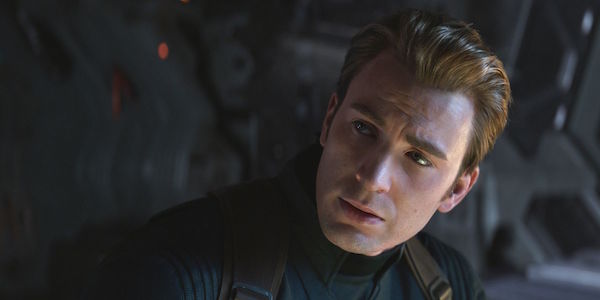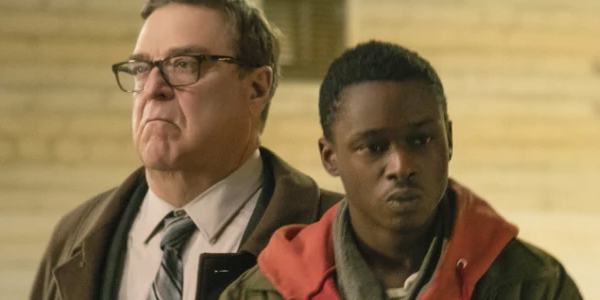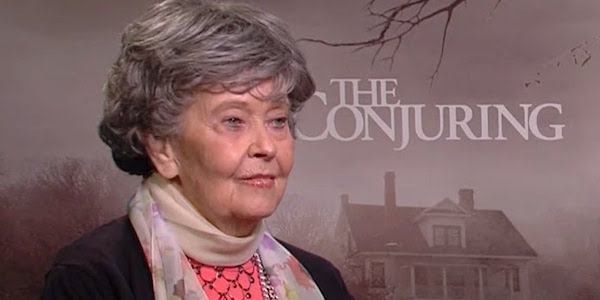Morbius: What We Know So Far About Sony's Venom Follow-Up

The Spider-Man mythology is currently being cinematically represented on three fronts. Tom Holland’s version of the Web-Slinger is still battling the forces of evil within the Marvel Cinematic Universe, and in December 2018, Spider-Man: Into the Spider-Verse was marked the first entry in a new animated franchise that’s already given the green light to a sequel and spinoff. And then there’s Sony’s live action Marvel universe, which doesn’t actually feature Spider-Man, but instead highlights some of his villains and allies.
Venom kicked off this particular franchise in October 2018, and while it wasn’t a critical hit, it was a commercial heavy hitter. Next up is Morbius, starring Morbius the Living Vampire, who’s been a frequent Spider-Man foe and occasional ally in the comics since 1971. We’re still a ways off from Morbius hitting theaters, but a decent amount of information has already come out that put together a loose picture of what to expect. So, let’s go over what’s been revealed about Morbius so far.
When Is Morbius’ Release Date?
Following Venom’s successful theatrical run, Sony didn’t waste any time putting Morbius on the calendar. Originally, the studio scheduled the movie for July 10, 2020, the same day that the new Ghostbusters movie is opening. But in early January 2019, Sony moved Morbius down to July 31 of the same year, and for right now, it has that opening weekend all to itself. That’ll likely change at some point, but because Morbius is opening towards the end of the summer movie season rather than in the middle of it, presumably that means it stands a better chance of drawing in audiences, since various other blockbusters will already have had their time to shine.
That said, Morbius is sandwiched between Disney’s Jungle Cruise, opening on July 24, and a still-to-be-revealed Warner Bros. event film, so it’s not like it’ll be all smooth sailing for Morbius. Although, at least where Jungle Cruise is concerned, Sony also has a still-to-be-revealed animation movie coming out that same weekend, so it’ll still be able to divert some money from Disney’s coffers into its own.
What Will Morbius Be Rated?
If you study Morbius’ comic book history and the fact that Spider-Man won’t be showing up in the upcoming movie, you’d think it’d be a great fit for an R rating. After all, this is a character that can thrive in a more violent setting and has that horror vibe built into its bones. Well, that’s what people thought about Venom too, and look how that turned out. For right now, we don’t know what Morbius will be rated, and that information won’t be announced to the public until a couple of months before release.
Maybe Sony will go the distance and deliver a no-holds barred Morbius movie that warrants an R rating. However, because of how successful Venom was and the fact that these two movies are set in the same universe, I suspect Sony will play it safe and aim for Morbius to be classified as PG-13. While we’ve seen sometimes that R-rated comic book movies can still haul in a lot of money (Deadpool 2 holds the record), it’s logical to assume that Morbius will have a better chance at financial success by going the PG-13 route and drawing in both adults and older kids to see it in theaters.
Who’s Directing Morbius?
In June 2018, approximately seven months after it was announced to the public that a Morbius the Living Vampire movie was in the works, word came in, after Antoine Fuqua and F. Gary Gray turned down the opportunity, that Swedish filmmaker Daniel Espinosa had been tapped to direct Morbius. After making a splash in Sweden with his 2010 movie Easy Money, he made the jump to the American film scene with Safe House and Child 44. Then his relationship with Sony began with Life, the movie that used Spider-Man 3 footage.
Life earned mixed reviews and only made a little over $100 million off a budget between $58-62 million, but it did show that Daniel Espinosa can work within the sci-fi horror realm, and that’s presumably how he ended up getting Morbius. Well, that and the fact that Jared Leto (more on him in a little bit) met with Espinosa about directing Morbius, which also convinced Leto that this was a movie worth starring in.
We’ll have to wait and see how Morbius turns out under Daniel Espinosa’s direction, but it definitely helps that he already has some horror experience under his belt rather than this being his first time working within the genre. While the chances of Morbius making Venom levels of money are slim, fingers crossed that Espinosa and his team can deliver a movie that will appeal to Marvel fans and general audiences alike.
What Will Morbius Be About?
As of right now, no specific Morbius plot details have been made available to the public yet. However, it’s expected to stick relatively closely to the source material and hit the same basic beats for his origin story, albeit without Spider-Man.
For those unfamiliar with Morbius the Living Vampire, he was originally a Nobel Prize-winning biologist named Michael Morbius who suffered from a rare blood condition. Desperate to cure his condition, Michael gave himself an experimental treatment involving electroshock therapy and vampire bat DNA. This treatment did successfully cure his blood condition, but the tradeoff was something much worse: being afflicted with “pseudo-vampirism,” requiring him to ingest blood in order to survive and becoming weakened by light. For all intents and purposes, he’d turned into a vampire
Although Morbius has definitely been a tragic character since the beginning, like Venom, he was initially depicted as a straightforward super villain for Spider-Man. However, he’s also followed in Venom’s footsteps by evolving into more of an anti-hero who fights monsters (including other vampires) and villains who are truly malevolent. When he’s on this path, he only drinks the blood of those he deems guilty.
Morbius’ powers include superhuman strength, durability and speed; hypnotism; and an accelerated healing factor. Aside from his aversion to light, he also doesn’t have the same weaknesses that a traditional vampire does, like garlic and silver. It’s also been shown that drinking Spider-Man’s irradiated blood causes Morbius’ condition to fade away for a while, though since the Web-Slinger isn’t appearing in this upcoming movie, the cinematic Morbius won’t have that to fall back on.
Outside of the comics, Morbius the Living Vampire has most notably appeared in Spider-Man: The Animated Series, where the character sucked “plasma” out of his victims using suckers on his palms. Morbius was also teased in an alternate ending for Blade, and while, originally, writer David S. Goyer intended for him to be the villain in a Blade sequel, the finalized Blade II ended up adapting the Reaper storyline instead.
Jared Leto
Following his turn as The Joker in Suicide Squad (a role we’re still not sure he’s going to reprise in the DC Extended Universe), Jared Leto is now making the jump to Marvel by playing Michael Morbius. As mentioned earlier, Leto didn’t sign onto Morbius right away; it was only after he met with Daniel Espinosa in Germany while he was on tour with his band 30 Seconds to Mars that the actor finally decided to move from “loosely attached” to the project to fully committing to it.
We have yet to see how Jared Leto’s Morbius will look in vampire form, but the actor has posted a few looks of himself portraying the character on set. One picture has his face mostly obscured by a clapperboard, but there’s a sickly look to his eyes that could mean this is when Michael Morbius is still fully human and suffering from his blood condition. Then there was a gif of Morbius wearing a hooded jacket and standing in the middle of a crowded street; I’m guessing this takes place shortly after he’s stricken with vampirism as he still looks like a normal human.
Adria Arjona
Michael Morbius wasn’t alone when he created the treatment for his blood condition. He was working alongside his fiancée, [Martine Bancroft](https://marvel.fandom.com/wiki/MartineBancroft(Earth-616), who Adria Arjona will be playing in the movie. She has built quite the resume in her relatively short acting career, appearing in movies like The Belko Experiment, Pacific Rim Uprising and Triple Frontier, as well as starring in TV shows like True Detective and Emerald City.
After he became a vampire, Morbius tried desperately to find a cure so that he could protect Martine, but he was unsuccessful and their relationship collapsed. Years later, Martine was killed by Doctor Langford after she discovered he was trying to kill Morbius, but her death was avenged when Morbius slew Langford. However, in typical comic book fashion, Martine would later be resurrected as a vampire, though she would eventually meet her second demise.
It’s hard to say just what kind of relationship Michael Morbius and Martine Bancroft will have in Morbius. There’s a good chance it’s still romantic, but they might not be engaged like they were in the comics. It’s also unclear if Martine will transform into a vampire, although given that Venom gave us a little bit of Michelle Williams’ Ann Weying as She-Venom, anything is possible.
Matt Smith
He’ll arguably always be best known for playing the Eleventh Doctor on Doctor Who, but Matt Smith’s career hasn’t faltered since he left the TARDIS. On the big screen, he’s appeared in Terminator Genisys and Pride and Prejudice and Zombies (he says he will NOT be in Star Wars: The Rise of Skywalker), and he’s kept his small screen run going with The Crown. For Morbius, he’ll be playing the role of Loxias Crown, the main villain.
Those of you familiar with the comics won’t recognize that name. That’s because Loxias Crown is a version of the baddie [Hunger](https://marvel.fandom.com/wiki/Hunger(Crown) (Earth-616), a.k.a. Crown, who was introduced in 1997’s _Spider-Man #76. Like Morbius, he was a vampire-like being who fought both our eponymous protagonist and Spider-Man, and was also a former HYDRA agent. However, the Morbius movie’s version will have a much different backstory, as Smith’s Loxias Crown is Michael Morbius’ friend who shares the same rare blood condition.
We don’t know anything beyond that, but one can infer that somehow, either through the same treatment Michael Morbius used or a different source, Loxias Crown will also become a vampiric being and use his powers to attack his former friend for some perceived slight.
Jared Harris
Even if you don’t recognize his name, there’s a good chance you’ve seen Jared Harris in at least one thing, if not several. From Mr. Deeds and Sherlock Holmes: A Game of Shadows to Fringe and Mad Men, Harris has an accomplished resume of movie and TV work. Like Matt Smith, he also recently appeared on The Crown, and nowadays he can be seen playing Francis Cozier on The Terror.
All we know so far about Jared Harris’ Morbius character is that he’s Michael Morbius’ mentor. Rumor has it that this could be Emil Nikos, which would be interesting, because in the comics, Nikos is Michael Morbius’ best friend, a position being occupied by Loxias Crown on the big screen. If Harris is indeed playing Nikos, that could mean we don’t spend that much time with him, because Nikos was also Morbius’ first victim when he became a vampire.
That said, since rumor has it Morbius’ Emil Nikos will be much different from his comic book counterpart, perhaps this means his fate won’t be the same either. And even if he is killed, Nikos was resurrected as a vampire in the comics, so Harris’ version could follow suit. If that were to happen, though, I suspect that by the time Morbius has concluded, Nikos would be dead again, this time permanently.
Tyrese Gibson
Tyrese Gibson is no stranger to blockbuster work, as he’s best known on the acting side of his career for playing Roman Pierce in the Fast & Furious movies and Robert Epps in the Transformers movies. For years, he’s expressed interest in playing Green Lantern in the DC Extended Universe, and while there’s still no indication that’s going to happen, he’s finally made the jump to the comic book realm with Morbius.
It was initially reported that Tyrese Gibson is playing an FBI agent hunting Michael Morbius, and Gibson later identified his character as “Agent Stroud.” That means that Gibson is portraying Simon Stroud, who, in the comics, was a CIA agent-turned-mercenary who hunted down Morbius and fellow monster Man-Wolf, the alter ego of J. Jonah Jameson’s son, John. Whether Stroud’s pursuit of Morbius is strictly business or a more personal mission remains to be seen, but one would imagine he’ll be a hindrance for most of the movie, though that doesn’t discount the possibility of him becoming an ally later down the line.
Gibson also reportedly signed a three-picture deal when he joined Morbius, so if the movie gets a sequel or two, expect Gibson’s Stroud to be back. On the other hand, since Morbius is part of a shared universe, maybe Stroud could return in Venom 2 or a different installment in the Sony Marvel Universe, thus having him fill a similar role to the one Phil Coulson had in Phase 1 of the Marvel Cinematic Universe.
That’s all we know for now about Morbius, but stay tuned to CinemaBlend for more updates about the project as they roll in. For now, you can keep track of what’s heading to theaters this year by looking through our 2019 release schedule.












